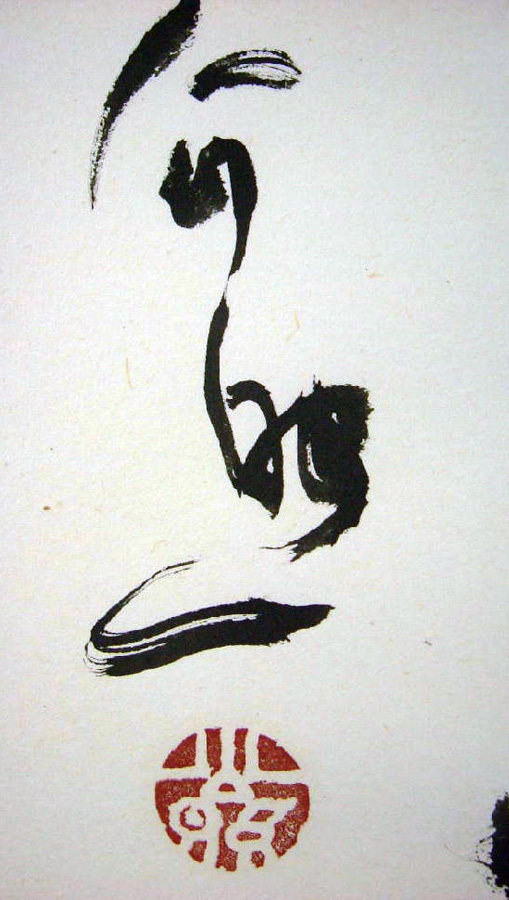Shimizu Kōshō 清水公照, 1911-1999.
Shimizu Kōshō was born in the famous castle town of Himeji on January 3rd, 1911 and entered Tōdai-ji-Temple in Nara in 1927. Upon graduation in Buddhist studies from Ryokoku University in 1933 he took up residence at Tenryu-ji for four years to study and practice Zen under the guidance of the Abbot Seki Seisetsu (1877-1945). When he returned to Tōdai-ji, the first steps of his career were closely linked to the temple's teaching institutions. In 1947 he became Director of the school (which was later to become the still existing Tōdai-ji High School). In 1959 he was appointed the Director of the Monks' Academy (Kangakuin) at Tōdai-ji, and in 1963 became Director of Tōdai-ji Girls' School and Tōdai-ji Kindergarten. 1969 marked a turning point in Kōshō's career, when he was appointed as Head of Religious Affairs of the Kegon Tradition. In 1975 the Abbot Kamitsukasa Kaiun (1907-1975) died and Shimizu Kōshō was chosen as his successor, becoming the 207th Abbot of Tōdai-ji. He remained in this position for only a short time, resigning in 1981.
For the remaining nearly twenty years of his life, he was dedicated to the life of an artist. He became a prolific "eccentric" painter, calligrapher and figurative potter. Unlike most artist-monks, he did not limit himself to painting in only black ink, but enjoyed a full range of colours. His writing and painting styles are what may be described as obsessively impulsive. In 1994, when the Shosha Art and Craft Museum (in Himeji, Hyogo Prefecture), was founded, Shimizu Kōshō was made its honorary director because he donated a large number of his artworks. He died on May 6th, 1999.
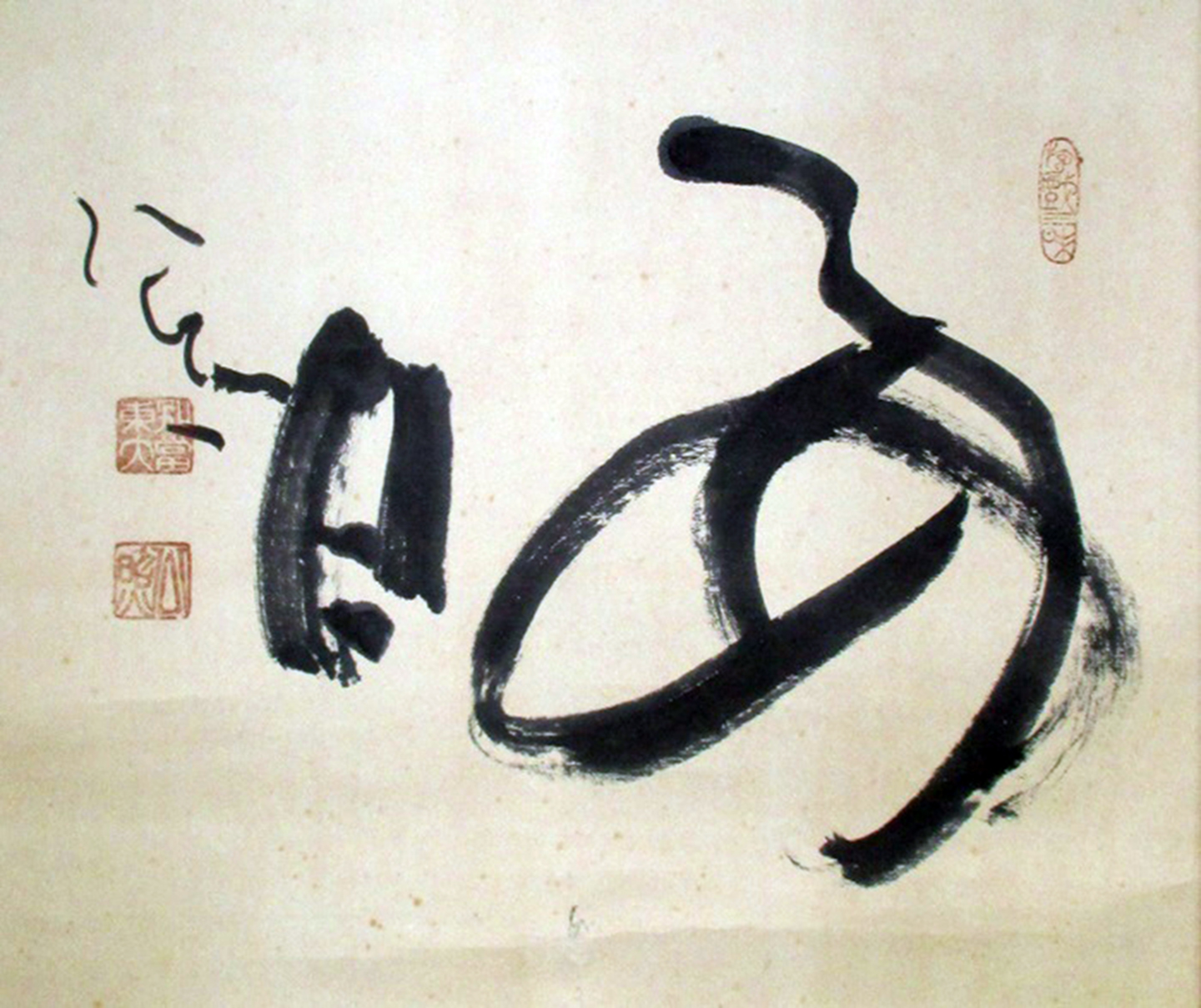
Creator.Personal Name: Shimizu Kōshō, 1911-1999.
Creator.Role: calligrapher
Title: 是好日 [good day]*
Description: hanging scroll; ink on paper; semicursive script kanji; signed by the artist; three artist's seals.
Type: Calligraphy—Japanese.
Type: Scroll (Visual work)—Japanese.
Culture: Japanese.
Style.Period: Modern.
Technique: painting.
Material.Medium: ink.
Material.Support: paper.
Measurements: width 18.9 in : height 47.9 in.
Location.Current Repository: private collection, C. J. Campbell (Chicago, Ill.)
Rights: C. J. Campbell.
Record Type: work.
*Part of the Zen phrase: 日々是好日.
This phrase is recorded in a famous text, Piyenlu (Hekiganroku, The Blue Cliff Record, a collection of Zen Buddhist Koans, or a question for Zen meditation, compiled in China during the Song Dynasty). One day, a Zen priest, Unmon Bunen (864-949) asked his pupils what their state of mind would be like 15 days later. While nobody could respond, he spoke up by himself 日々是好日 . It literally means "everyday is good day". But more profoundly, it implies you have to give attention to every one moment to the utmost, because all is vanity. Not only enjoying calm and peaceful days, but you have to accept even disastrous days which you face and to appreciate them as a gift.
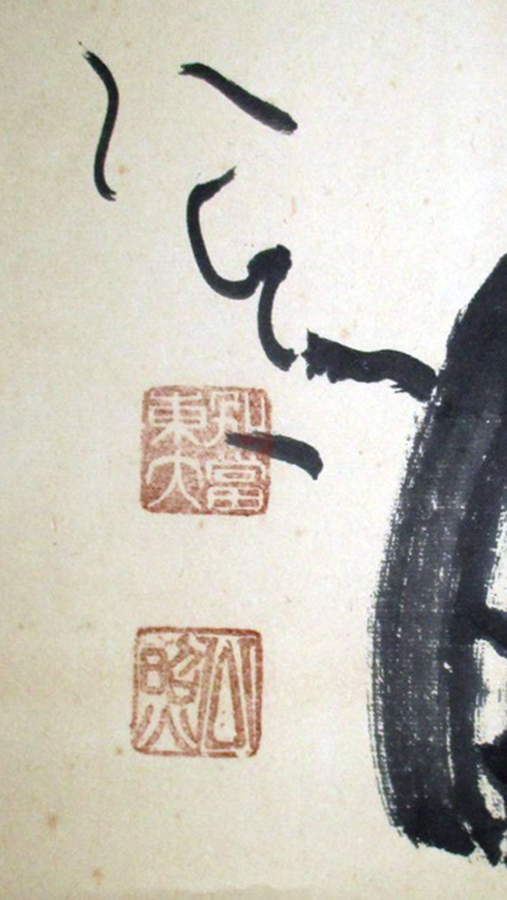
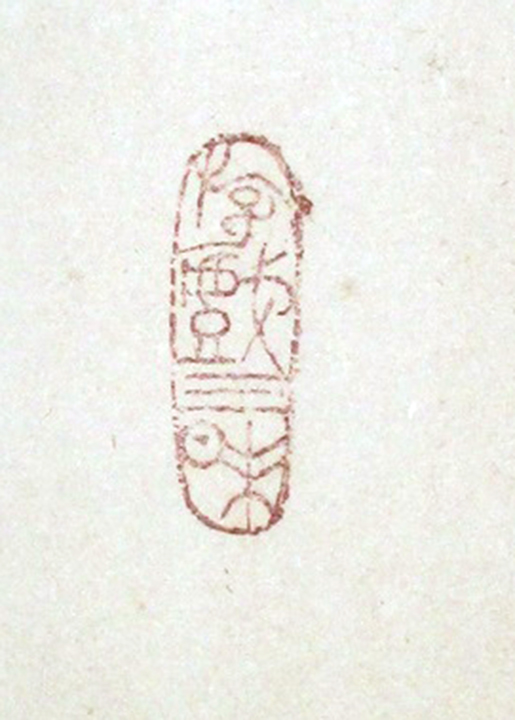
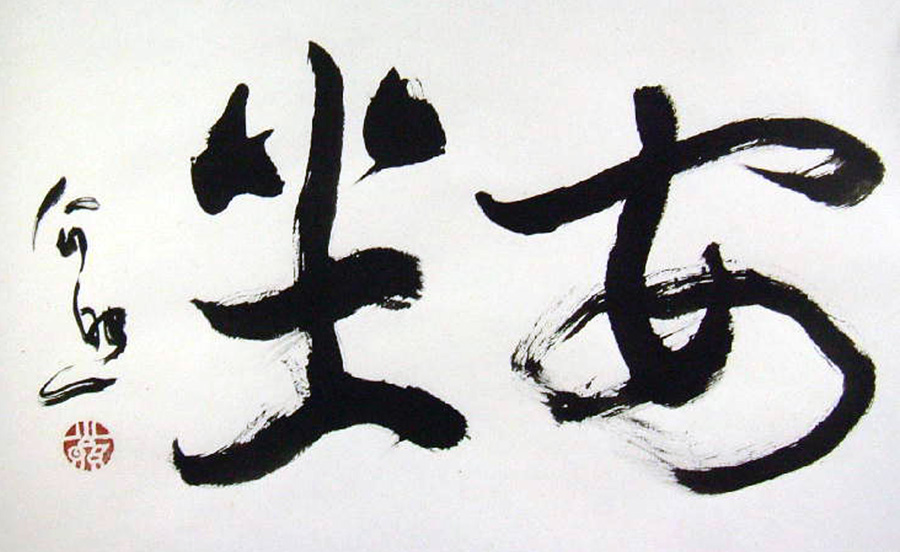
Creator.Personal Name: Shimizu Kōshō, 1911-1999.
Creator.Role: calligrapher
Title: 安座 [anza: informal sitting]
Description: hanging scroll; ink on paper; semicursive script kanji; signed by the artist; one artist's seal; with original box (tomobako).
Type: Calligraphy—Japanese.
Type: Scroll (Visual work)—Japanese.
Culture: Japanese.
Style.Period: Modern.
Technique: painting.
Material.Medium: ink.
Material.Support: paper.
Measurements: 24.6 in. x 46.4 in.
Location.Current Repository: private collection, C. J. Campbell (Chicago, Ill.)
Rights: C. J. Campbell.
Record Type: work.
